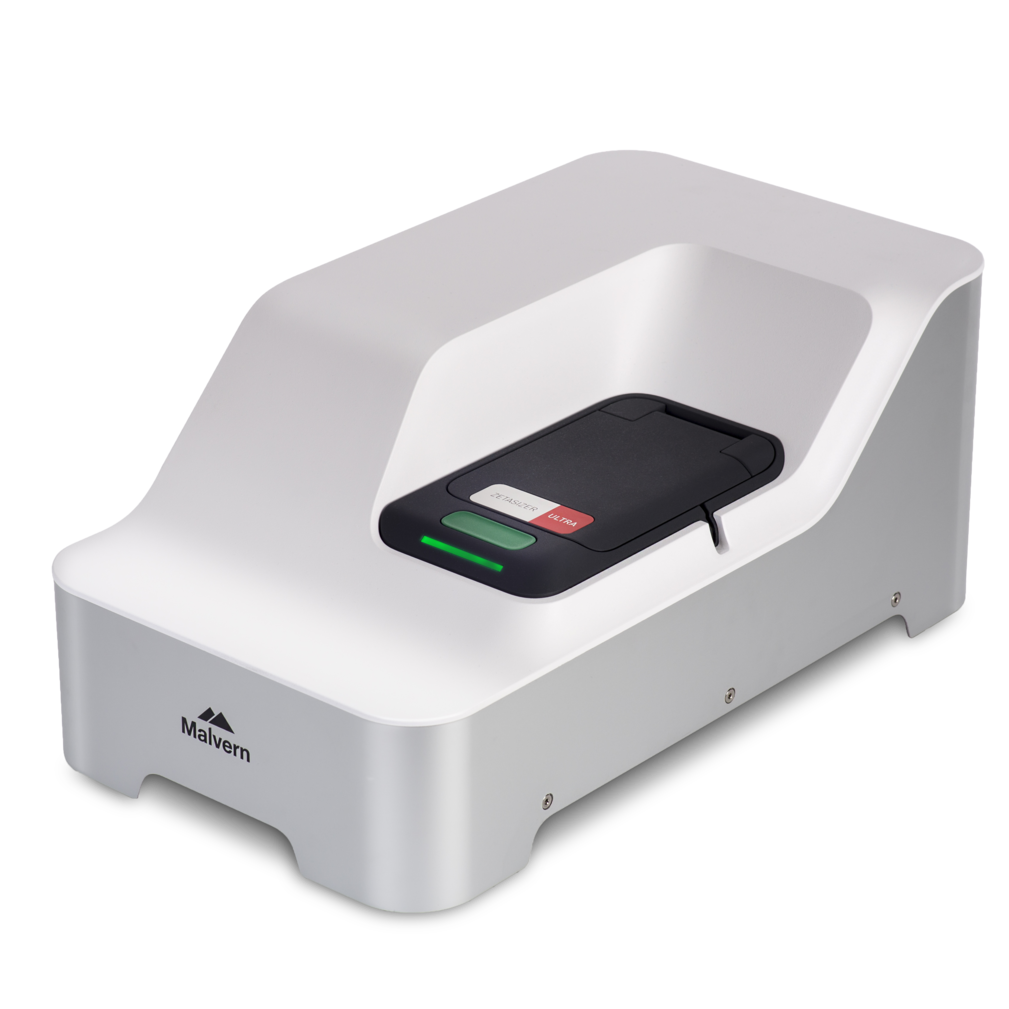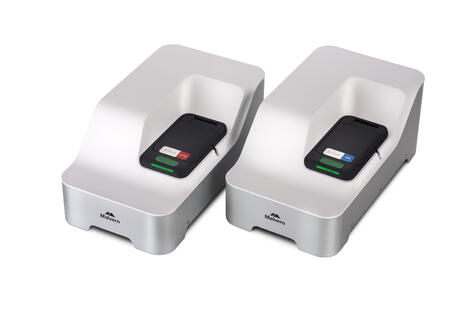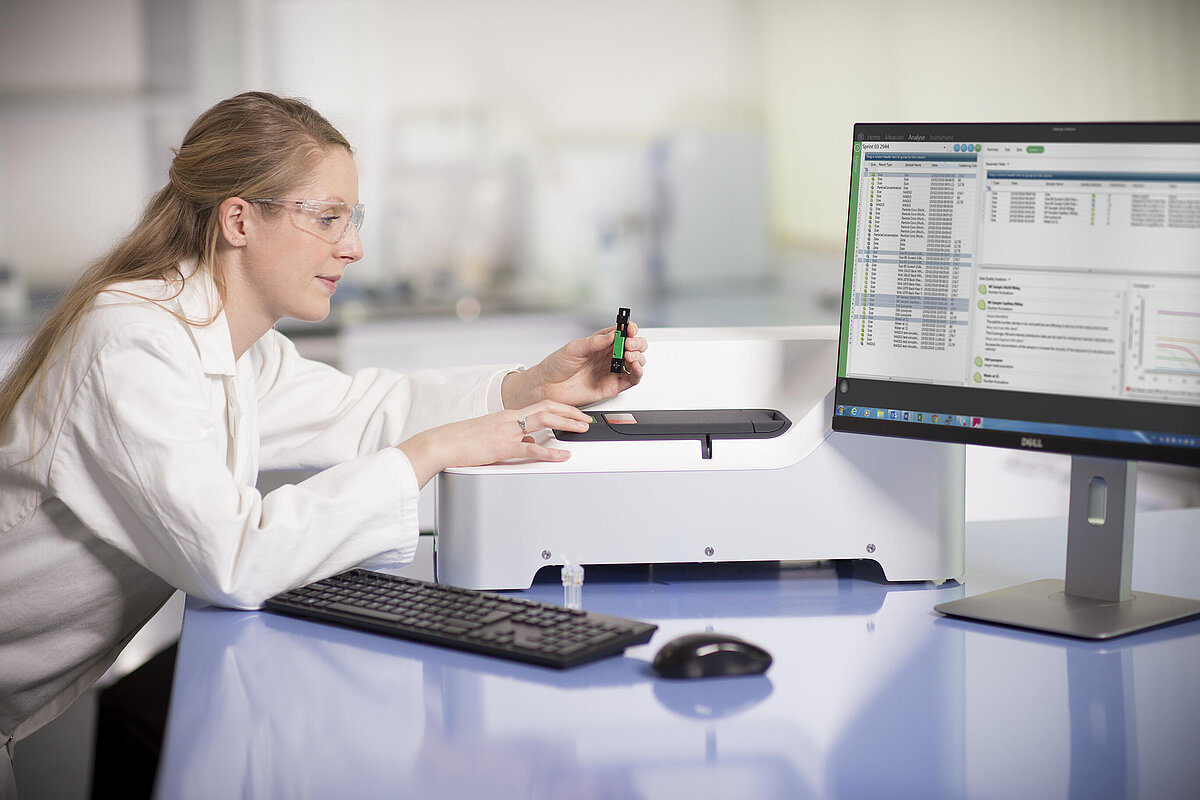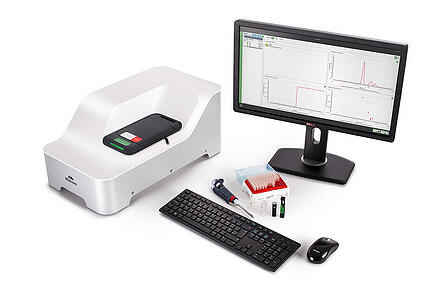Review: Zetasizer Ultra, a revolution in nanoparticle analysis
Posted by Nicole Bos on 04/2019
Malvern Panalytical has launched the revolutionary Zetasizer Ultra and Pro, which we are very excited about. In this review we focus on the brand new Zetasizer Ultra, the high-end model of the two. What makes the Zetasizer Ultra unique is the combination of adaptive correlation, high-resolution MADLS (multi-angle dynamic light scattering) nanosizing, particle concentration and Zeta potential in a single system.

The current standard
The Zetasizer Nano, a series better known as ‘the Nano’, has been the global standard for more than fifteen years when it comes to measuring nanoparticle size and Zeta potential. It is more than evident that this is the standard if we type 'Zetasizer' into Google Scholar: 90,000 hits. The analyser is known for its ease of use and sensitive NIBS-DLS (backscatter) or the budget-friendly 90º DLS version. And last but not least, for a laboratory concept: its disposable cuvettes for the measurement of Zeta potential. Although the Zetasizer series was extremely popular, we were regularly asked questions such as:
- How much data is actually discarded in the correlation process?
- Can DLS become a higher resolution technique?
- What is the added benefit of an additional DLS measurement angle?
- Can the Zetasizer/DLS also determine the particle concentration?
- Could DLS perhaps tell us something about the shape/aspect ratio of nanoparticles?
Malvern Panalytical has listened, as where it was previously unable to answer these questions it has now responded in full with the new Zetasizer Ultra.

Adaptive correlation
One of the major game changers is the new adaptive correlation (also available in the Pro version). With DLS light scattering we know that the presence of large particles, for instance >1 micron dust particles or aggregates, can significantly dominate the DLS/size measurement of smaller nanoparticles (as a 1-micron particle scatters a million times more light than a 100 nm particle). The presence of these large particles sometimes makes data interpretation difficult and possibly also unreliable. A very clean working process, for example filtering out dust and larger aggregates, can help. However, this additional step costs time and money (syringe filters). There is also the question of the extent to which the sample is affected by filtering.
With adaptive correlation, Malvern Panalytical has adopted an entirely innovative approach. Less sample preparation is required and the measurement gives a good overview of the presence of any large/disruptive particles. A win-win situation! This new correlation technique means that many shorter sub-runs (each lasting 1.7 seconds) are automatically performed and inspected. This data is then statistically classified. In other words: what is consistently present and what is not? The main result is then reported as the steady state for the particles that are consistently present. In addition, we see a second result for the transient particles that are only sporadically present, such as dust, aggregates or other oversized particles. If, during the adaptive correlation step, it is detected within 25 seconds (three batches of five sub-runs) that the correlation is consistent, the sub-runs stop and the result is reported in 25 seconds (three times faster than conventional correlation). Thanks to this new, faster method the result is reported in a much more reliable, robust and reproducible manner. The transient data also provides excellent insight into the presence of less consistent larger particles in the sample, without these being lost forever in the syringe filter.

MADLS, higher resolution
As is known with DLS, the number of scattered photons is dependent on the size of the particles. If the particles are small (and lie within the Rayleigh scattering limit), the laser light will be uniformly scattered in all directions (and therefore at all angles). If the particles are larger and fall outside the Rayleigh scattering limit, more photons will scatter in the forward angle. If there is a combination of large and small particles, a DLS measurement from three different angles will also give three different particle sizes.
The new MADLS uses the correlation function of the back scatter, side scatter and forward scatter angle together to get the best out of the DLS measurement. This produces one particle size result with the best fit at all three angles, including the highest resolution. Whereas the maximum resolution for DLS was previously 1:3, with MADLS we can now measure latex mixtures of 150 and 300 nm (1:2) as separate peaks. For the full characterisation of certain samples, a higher resolution technique such as MADLS can render other complementary (expensive and time-consuming) techniques such as TEM (transmission electron microscopy) superfluous.
Particle concentration
The MADLS particle size measurement and the Mie theory play an important role in determining the particle concentration (without calibration!) . The intensity-weighted PSD (particle size distribution) result obtained using MADLS is converted into an absolute concentration distribution based on the derived count rate and input from the optical parameters (refractive index and absorption coefficient of the particles and dispersant to be measured). The toluene count rate is used as a reference to normalise the detected photon count rate against the absolute scattered intensity. Thanks to this method, the distribution of the total population and the particle concentration of each population is shown separately.

Shape and aspect ratio
The software for the Zetasizer Ultra and Pro allows the use of two polarisers in the detector path: a horizontal and a vertical polariser (DDLS or depolarised DLS). If these results are compared to the DLS measurement without polariser and the three results are different, there is a rotational contribution from non-spherical particles. This means that the particles are not round, and therefore have a different aspect ratio.
Other key features
Last but not least, there are also other new features such as:
- Improved M3-PALS and constant current mode for measuring Zeta potential (Ultra and Pro)
- User-friendly new Xplorer software (including quality guidance system with advice on how to improve certain measurements or sample prep)
- Unique convenient low volume (3uL) capillary sizing cell
- Multipurpose titrator and the new zeta potential cuvettes, etc.
Want to find out more about the revolutionary new Zetasizer Ultra or Pro? Feel free to contact us. We will be happy to show you how it works on your own samples in our renovated application lab in Etten-Leur. You are most welcome!